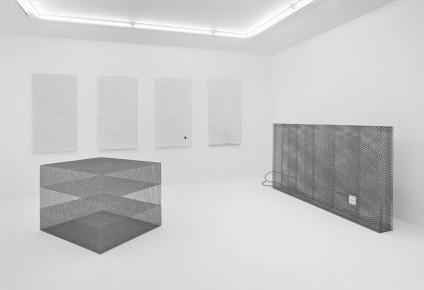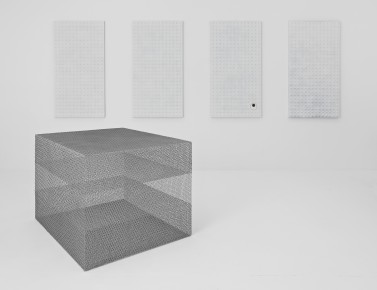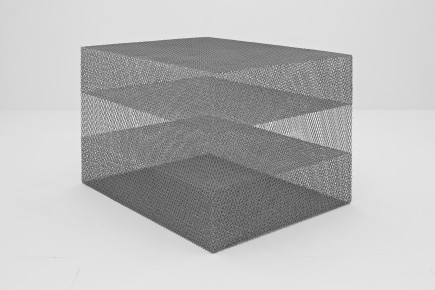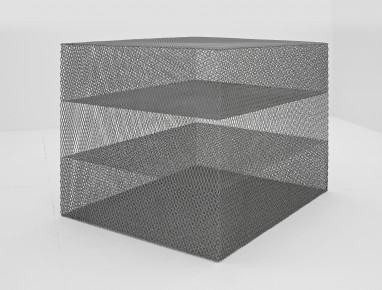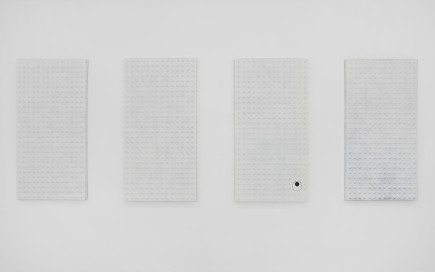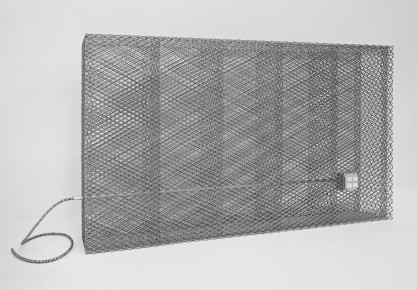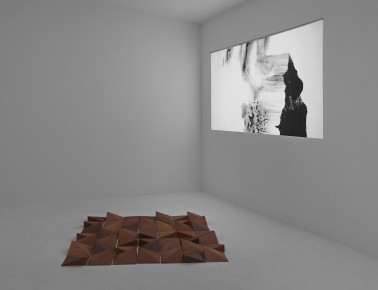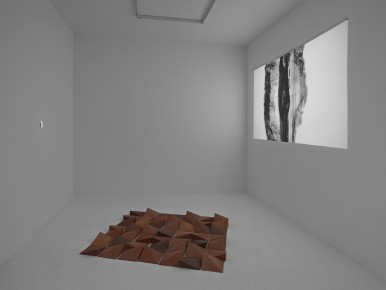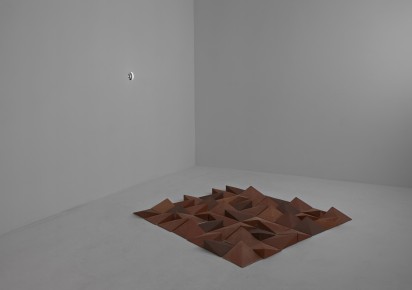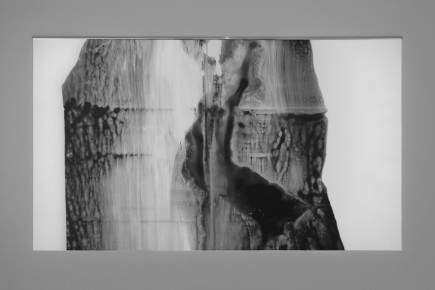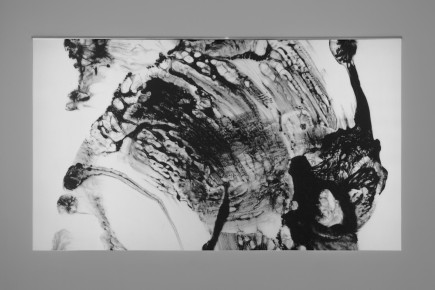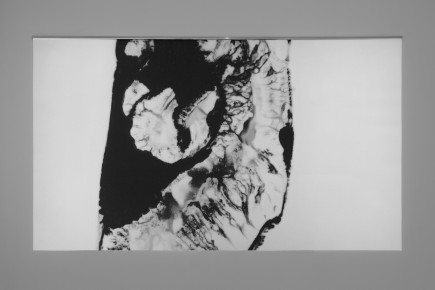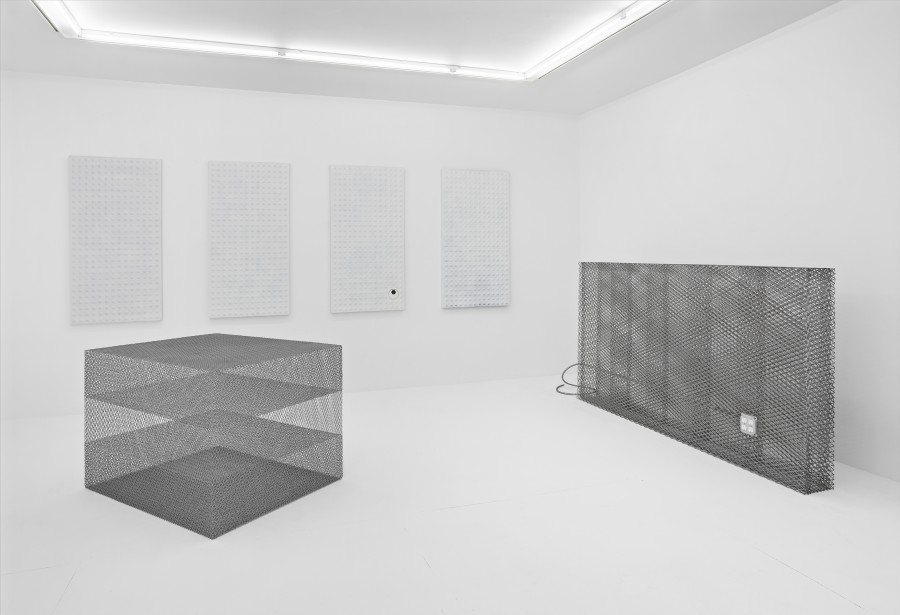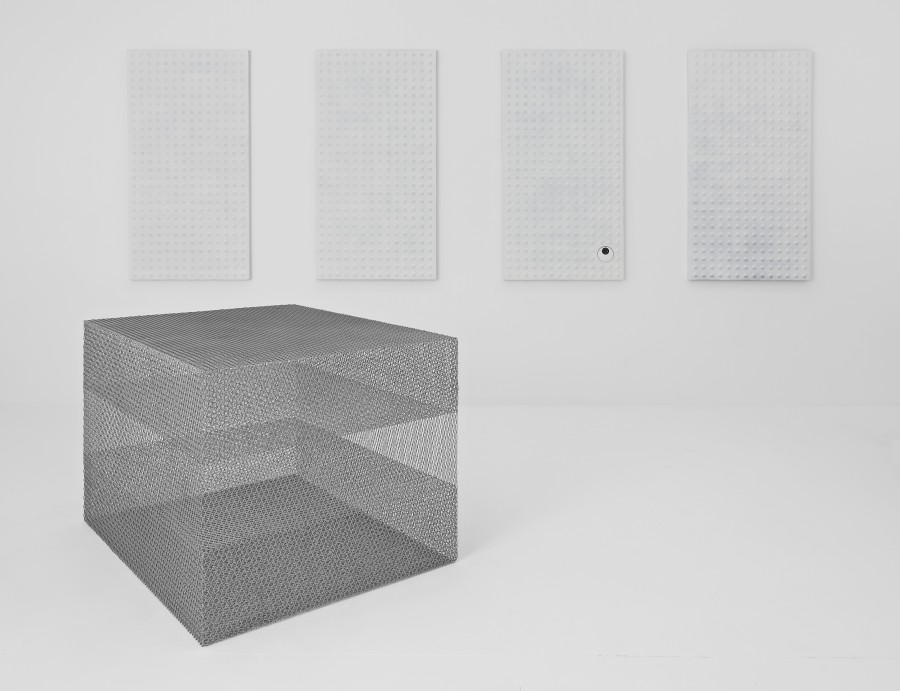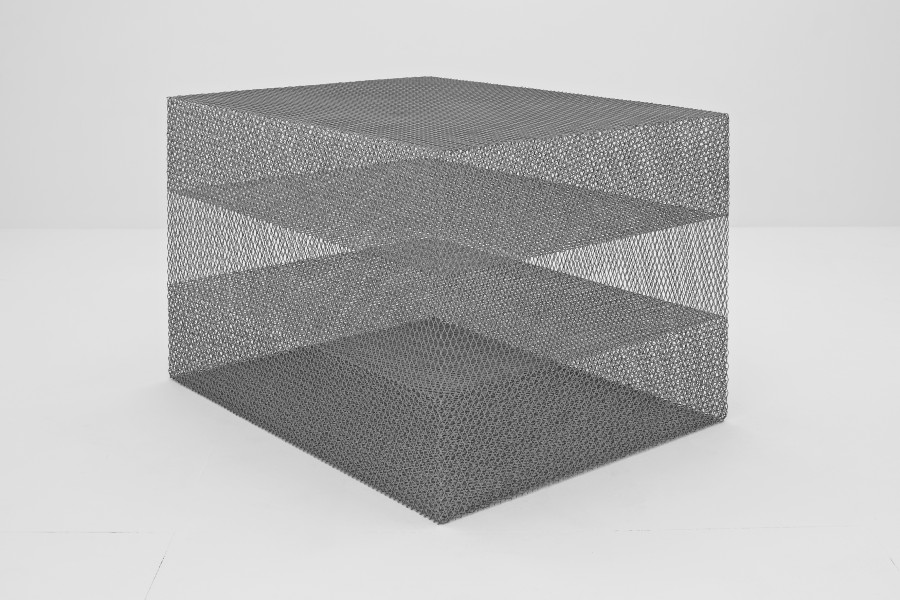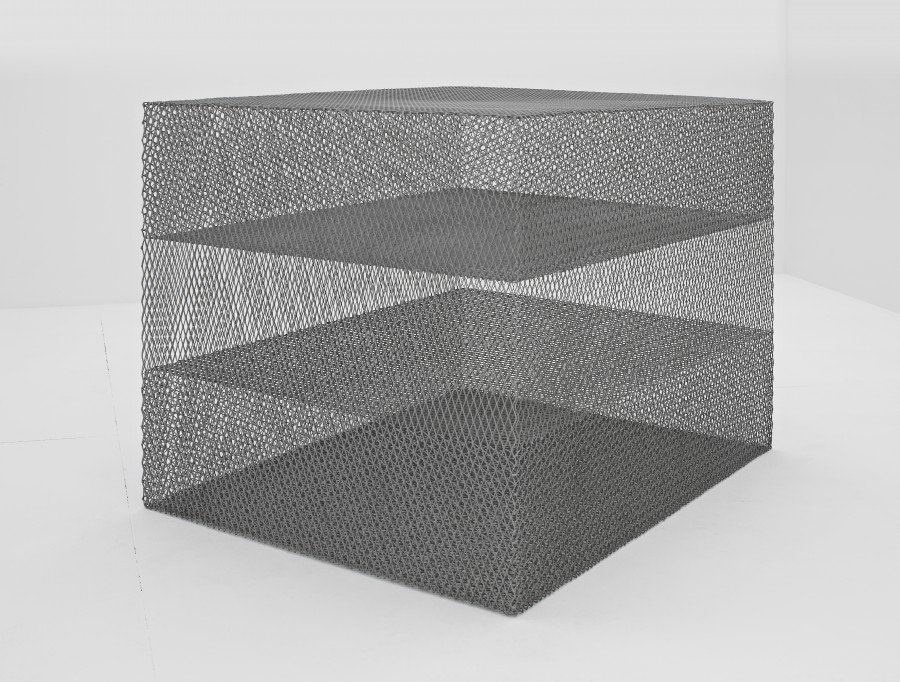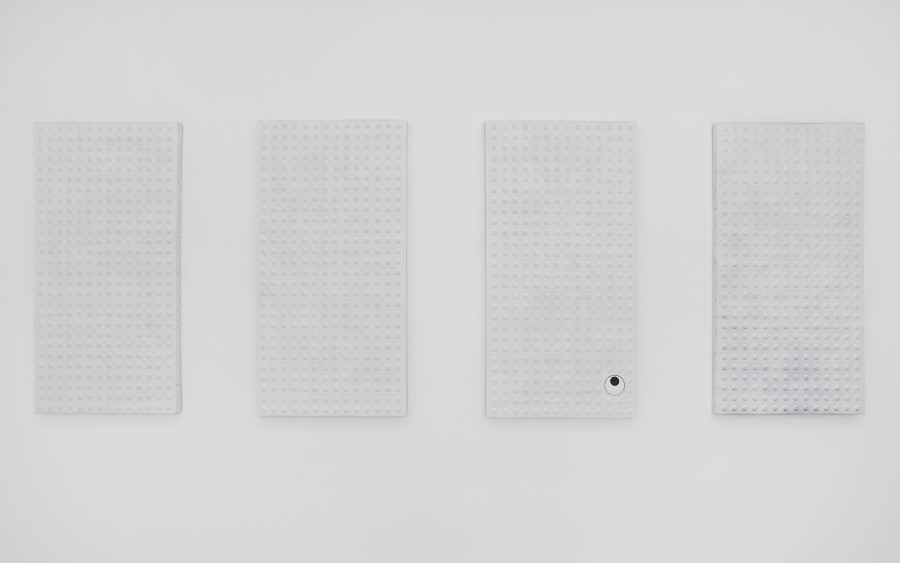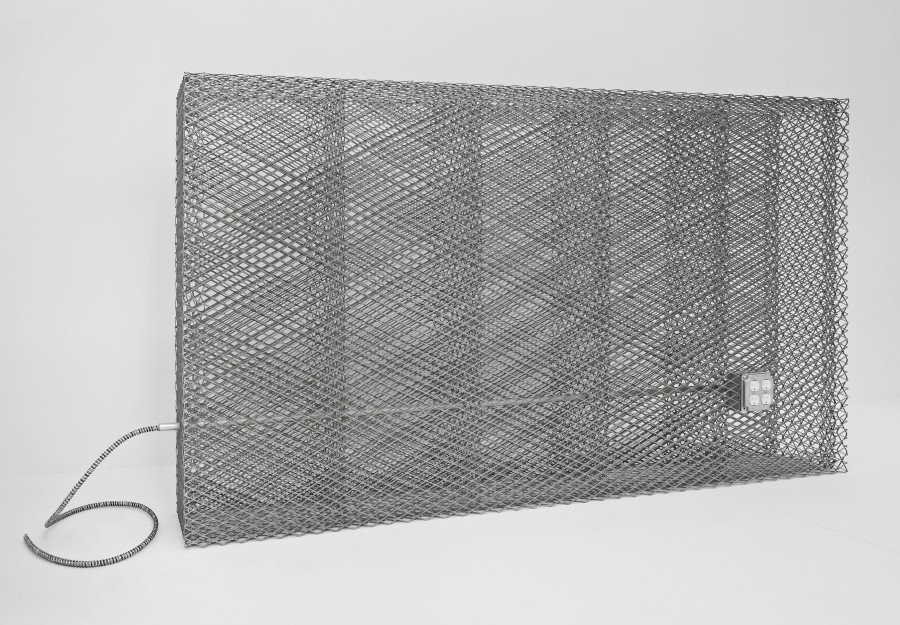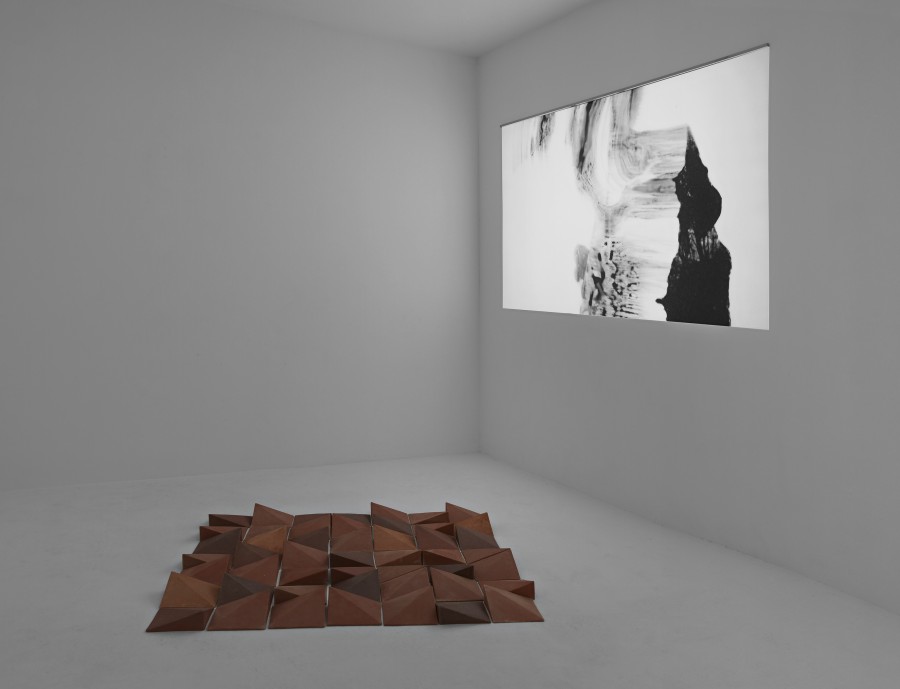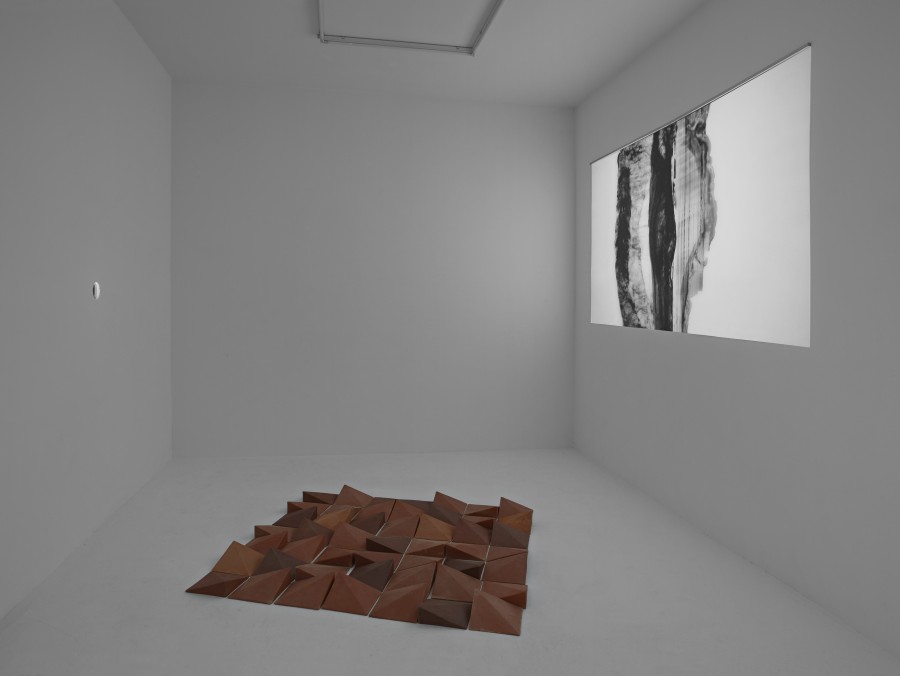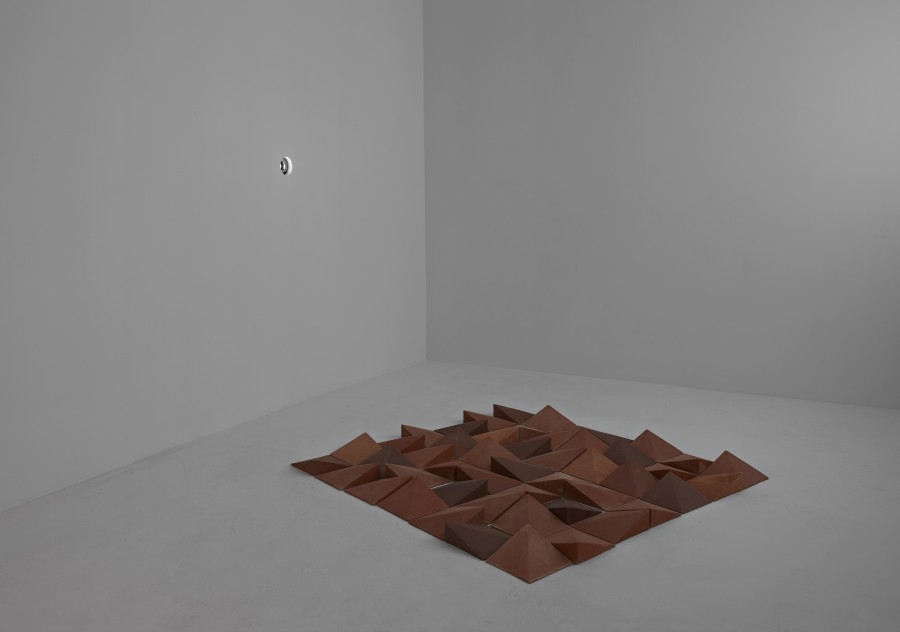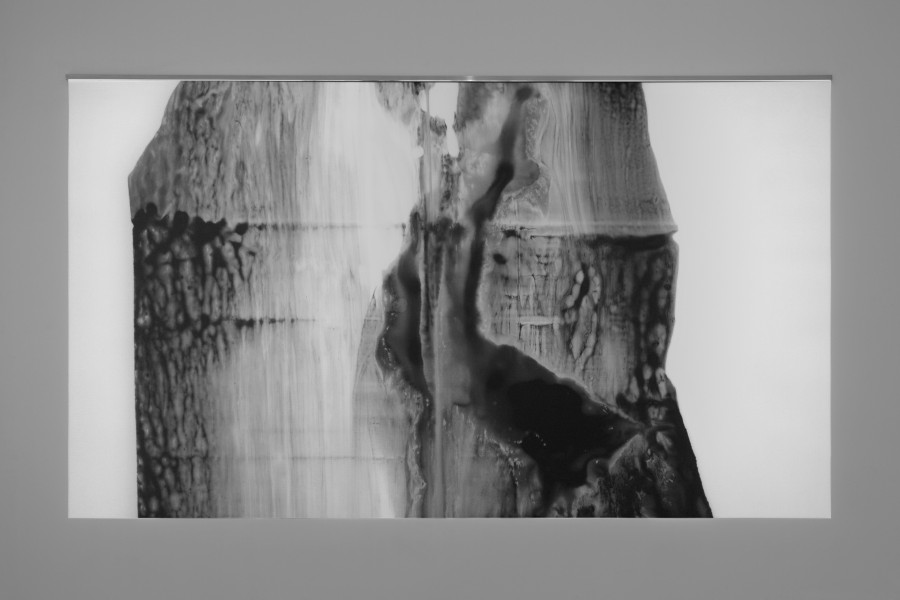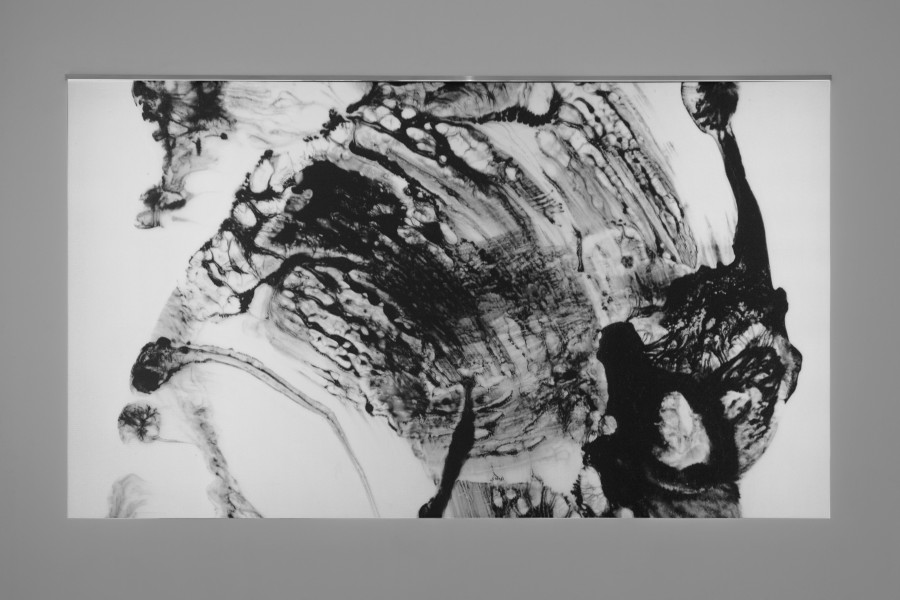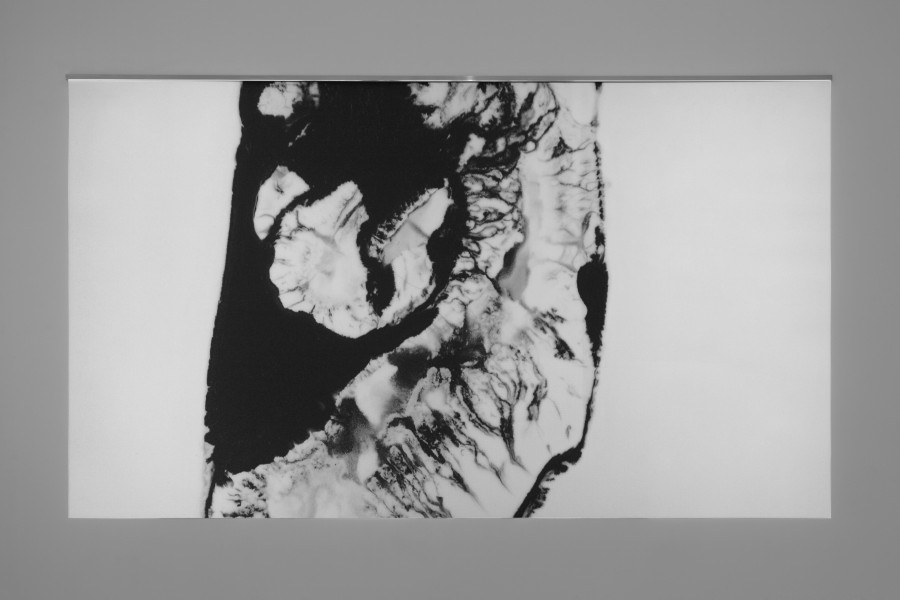Room East is pleased to present a two-person exhibition by David Andrew Tasman and G. William Webb, which takes as its subject the state of materiality in a rapidly dematerializing world. The title of the show “Bi- Stable States” refers to the quality or condition of a material that can occupy two states at once: historical and contemporary, digital and analogue, permanent and ephemeral, private and public, solid and liquid, handmade and machine made, transparent and opaque, etc.The works on view range from installation-based video to sculpture made in various materials.
David Andrew Tasman is an artist and writer. He previously practiced architecture in New York. Tasman’s work experiments with ambiguous delineations of space. Mass Instruction, for example, is a free-standing stud wall made of transparent expanded metal mesh. The work, evocative of the early large-scale sculptures of Robert Morris, considers new issues of transparency in a post-Snowden era where solid walls are no longer indicative of privacy. This topic is explored in two additional works, Bad Citizen and Double Stack. In the former, a surveillance camera is inset into one panel among a series made from ‘tactile warning surfaces’ (a material used on subway platforms, and urban crosswalks). The camera’s feed is accessible through a password protected wifi signal. Double Stack, a large, rectangular form is also made from expanded mesh. It is composed of several adjacent and overlapping volumes, and like Mass Instruction, complex visual patterns emerge from the interference of the various planes. In Tasman’s sculpture, the distinction between the digital and the analog collapse.
Over the past year, G. William Webb has collected discarded brick material, frequenting abandoned yards, construction sites, beaches and torn-up sidewalks. The artist breaks the found brick into a fine dust using a forged hammerhead. The physicality of this work integrates the clay body and energy required of the artist’s own body. Webb keeps records of the city intersections where he encounters these objects. He reconstitutes the brick dust into a workable material with the addition of sand, water and refractory clays. A reversal of clay’s chemical formation into ceramic – called quartz inversion, Webb’s process is an inversion of an inversion, converting a permanent body back into a formative state. The 49 handmade bricks that constitute Quantity 2014, retain the inherent geometry of traditional bricks while also following a 1:1 relationship in scale – hand size. This multipart sculpture anchors the white floor of the gallery while three, 20-minute video projections looped consecutively are projected directly onto the wall. A digital animation of the artist’s new drawings, which were made by mixing India ink with liquid soap on a vellum surface, Forge (I),(II),(III) take inspiration from Joseph Cornell’s video By Night with Torch and Spear 1942, a nine-minute, 16mm film that consists of footage shot at a metal foundry.
For downloadable exhibition material, click here.
